Chinese money plant care: everything you need to know will walk you through the steps to having a healthy Chinese money plant. I was going to say healthy and happy Chinese money plant. This got me thinking if one could actually determine whether a plant is healthy and happy or simply healthy, which may be synonymous with happiness in the plant kingdom. I will say that talking to plants does tend to make them grow more vigorously, anecdotally speaking. I have determined through trial and error that Chinese money plants respond well to music, particularly the early works of Bacharach. So, beyond spinning some classic tunes, what else do you need to know to have a happy plant? Keep reading to learn about soil, light, and water requirements for Chinese money plants.
Chinese Money Plant Care: Soil
The first thing you need to make sure of is that the soil you use to plant your Chinese money plant in does not contain neonicotinoids. Neonicotinoids are pesticides derived from nicotine that were once commonly added to potting soil. Once it was discovered that neonicotinoids were harmful to bees and responsible for the decline of entire bee colonies, the makers of these commercially available soils agreed to phase them out in the coming years. That was a few years ago, but check the ingredients on the package. The bees will thank you.
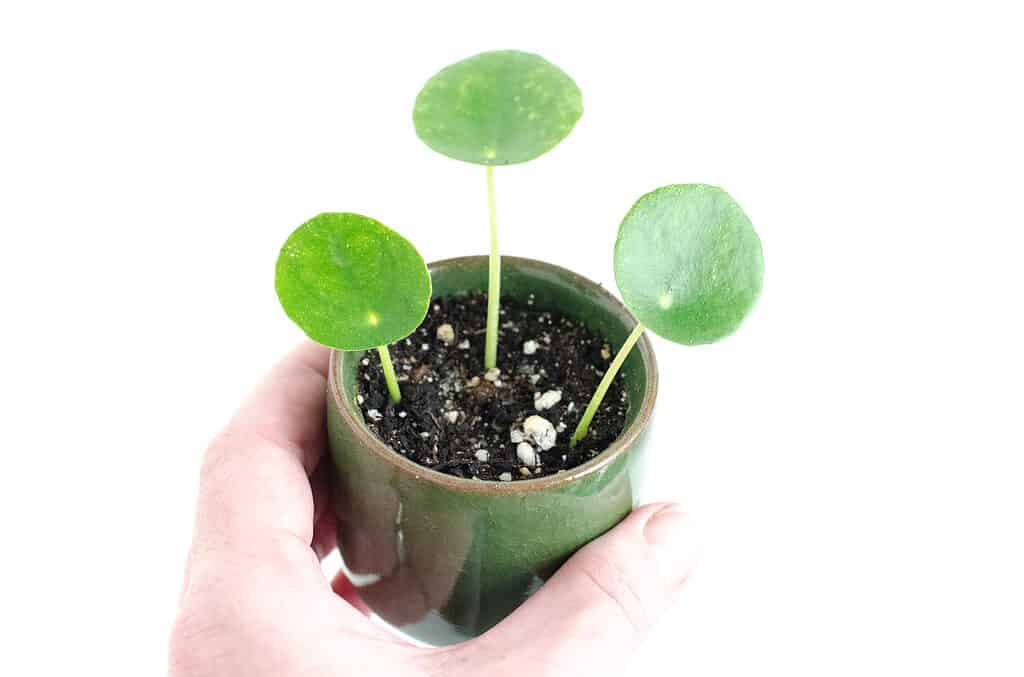
Fill in around the plant with more potting soil, leaving about 1/2 inch of space for ease of watering.
©Pegasene/Shutterstock.com
The best soil for your Pilea peperomioides is an organic mix containing peat, coco coir, and perlite. This mixture allows for the perfect combination of moisture and airiness to help your Chinese money plant thrive. You’ll want to fill the container about 1/2 way with soil before placing the plant into the pot. Fill in around the plant, leaving about 1/2 inch of space for ease of watering. Chinese money plants are vigorous growers producing many offshoots. Therefore, you’ll want to keep the potting soil handy for propagating the offshoots.
Chinese Money Plant Care: Light
Your freshly potted money plant deserves a place of honor in your home. Fortunately, these hardy houseplants aren’t finicky when it comes to light. With a little thought to placement, Pilea peperomioides can grow in just bout any room in your home or office. The only exception is/are rooms with only north-facing windows. Such rooms simply do not have enough sunlight to sustain Chinese money plants.
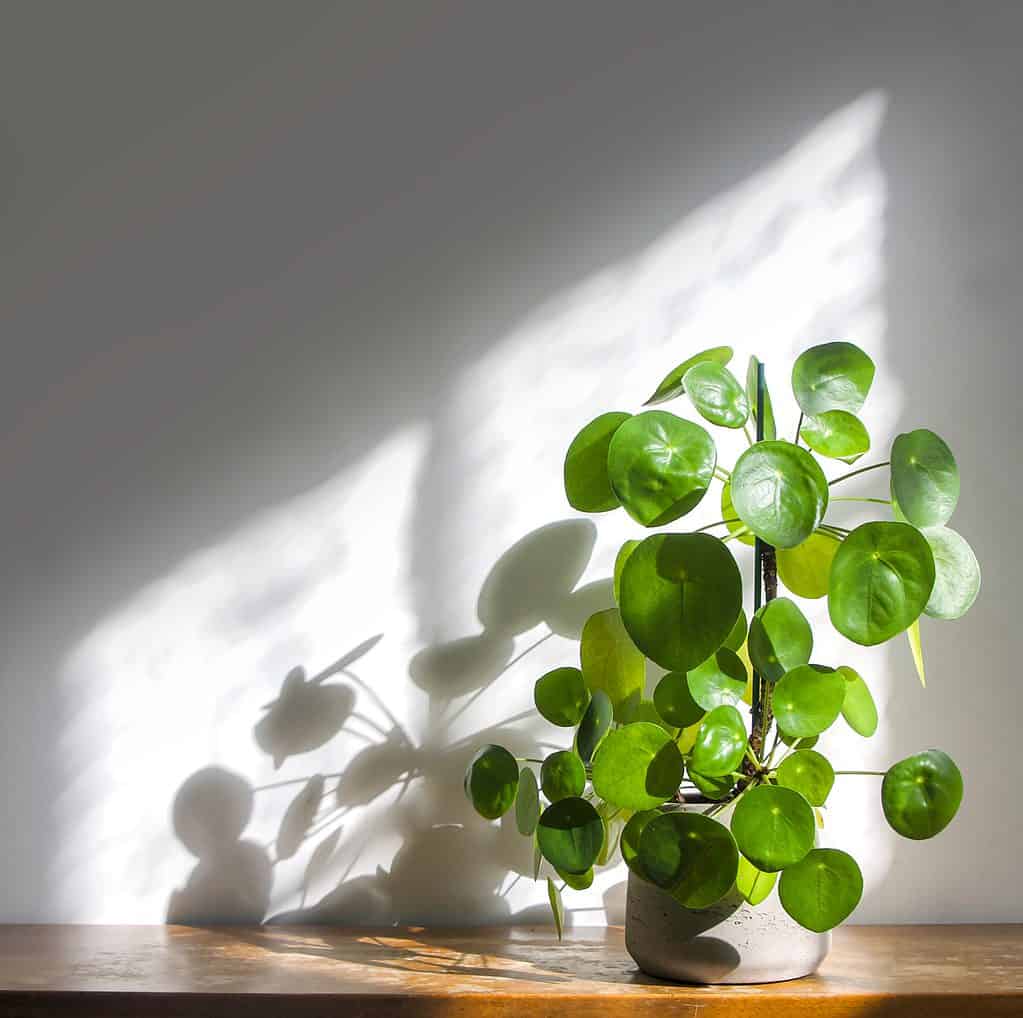
Turing a Chinese money plant that is kept in an east-facing window one 1/4 turn every week will keep it growing evenly.
©Kulbir G/Shutterstock.com
Eastern Light
Eastern windows are a good choice, bathing the plants in the morning sun. The morning sun is generally not too hot, offering the money plant several hours of direct sunlight. Turing a Chinese money plant that is kept in an east-facing window one 1/4 turn every week will keep it growing evenly. At the height of summer, check to be certain the window is not heating up too much. The plant will undoubtedly show signs of distress, from a reddening of the stems and leaves, to in severe cases, brown, crisp leaves.
Southern Light
The crisp leaf scenario is more likely to occur to a plant that is placed in or too close to a Southern facing window. Especially in the summertime. Southern windows are too hot for Chinese money plants. A room with a Southern window, however, provides plenty of light for your plant. In rooms with south-facing windows, place your money plant in the center of the room or along a wall.
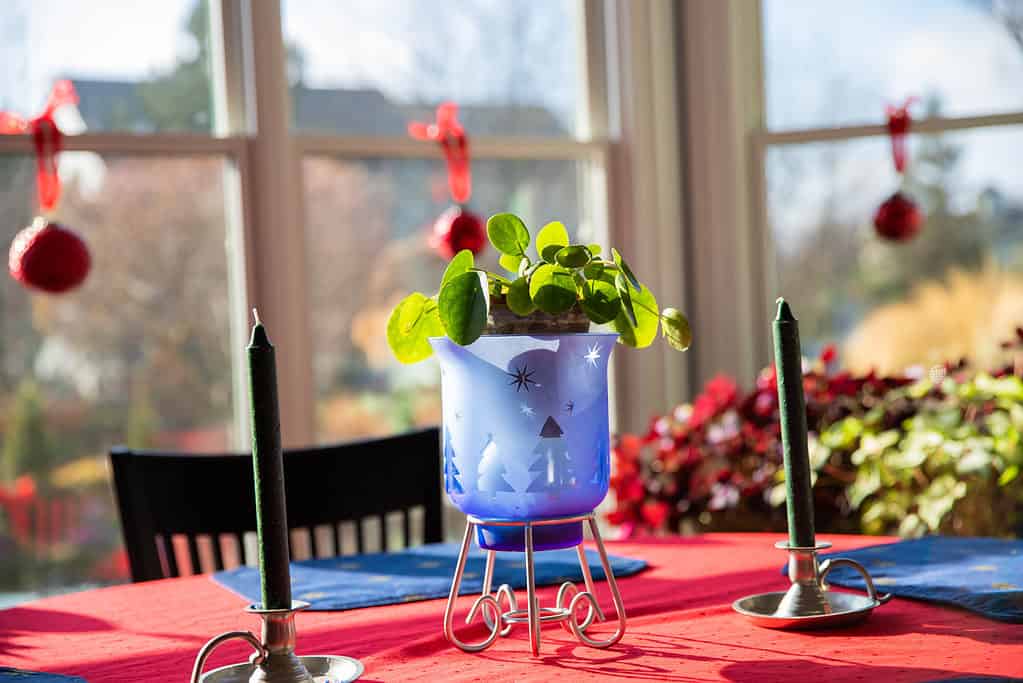
In rooms with south-facing windows, place your money plant in the center of the room.
©Molly Shannon/Shutterstock.com
Western Light
Like its neighbor to the south, west-facing windows can get much too hot for Pilea peperomioides. So, like in rooms with south-facing windows, placing the plant in the center of the room with west-facing windows will provide the plant with enough light.
If you’re stuck in a windowless office or an apartment with only northern exposure, a grow light can provide life-giving light to your Chinese money plant. There are a number of different varieties of grow lights available to consumers. You’re sure to find one to fit your needs.
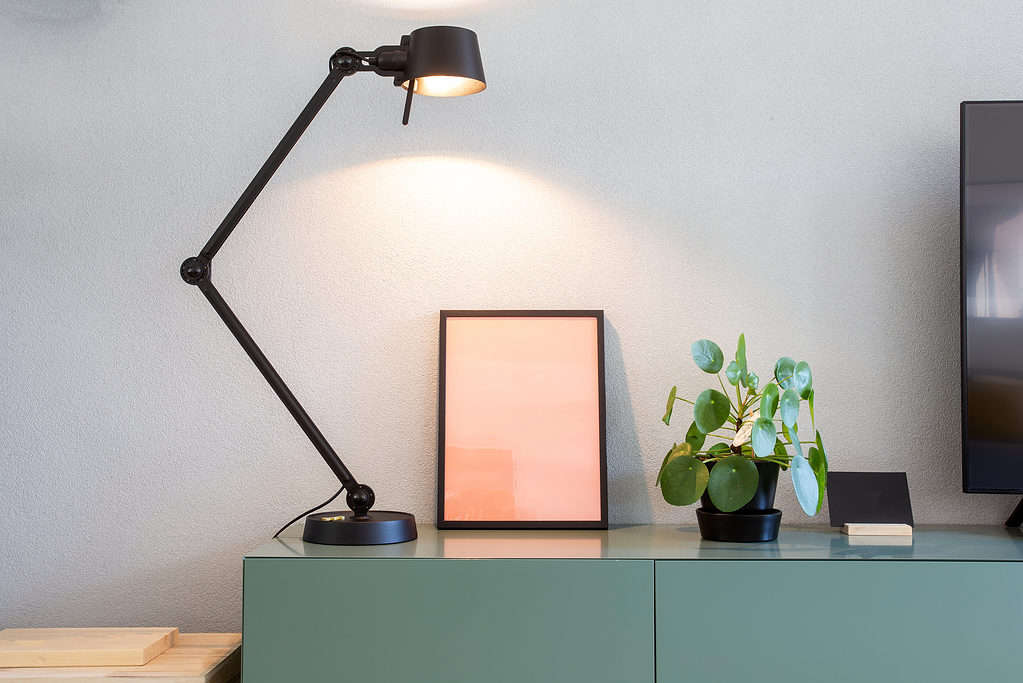
If you’re stuck in a windowless office or an apartment with only northern exposure, a grow light can provide life-giving light to your Chinese money plant.
©A-photographyy/Shutterstock.com
Chinese Money Plant Care: Water
Less is more, an adage attributed to the architect Ludwig Mies van der Rohe is a good one to keep in mind when it comes to watering your Pilea peperomioides. One thing these plants will not tolerate is overwatering. As a general rule, in an established plant, when the top 2 inches of soil are dry to the touch, it’s time to give your plant a good soaking. Whether you water the soil directly from the top with a faucet or watering can, or whether you prefer to bottom water using a saucer so the soil absorbs the water, be certain to drench your plant.
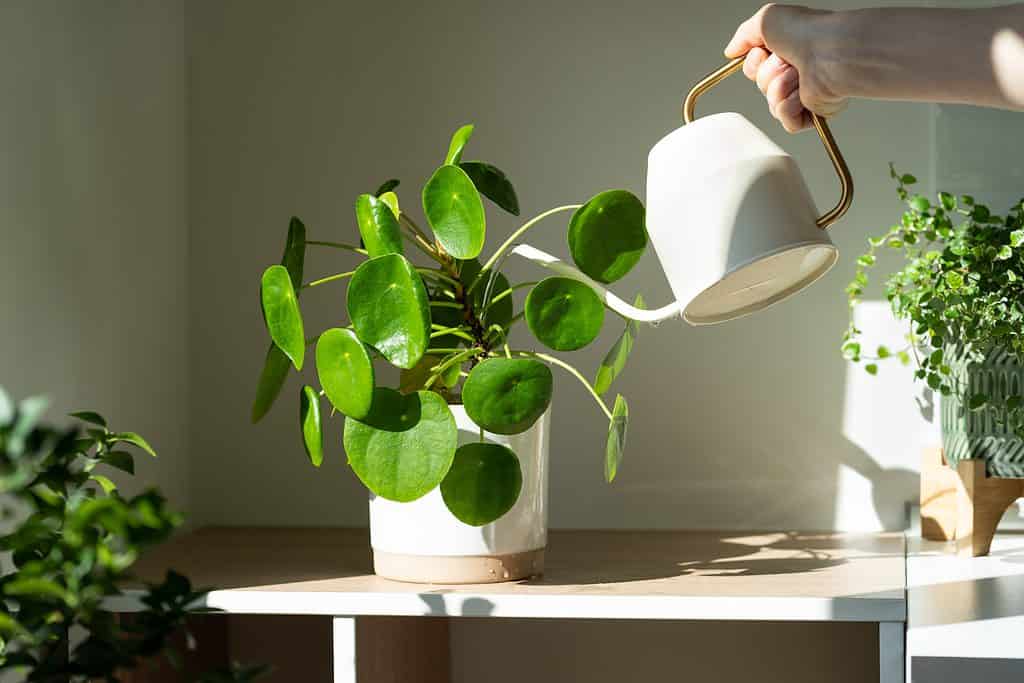
As a general rule, in an established plant, when the top 2 inches of soil are dry to the touch, it’s time to give your plant a good soaking.
©DimaBerlin/Shutterstock.com
Drenching the soil and then allowing it to dry out is the most successful watering routine for Chinese money plants. Depending on the conditions in your home or office, weekly waterings are suggested in warmer months, while watering every two-to-three weeks is the wintertime routine. However, it’s better to check the soil for moisture rather than relying on a steadfast schedule. Remember, when it comes to watering, less is more!
Chinese Money Plant Care: Propagation
Chinese money plants are hardy plants that multiply like rabbits. Although, instead of producing baby bunnies, they produce offsets. Little clones of the original plant begin popping up around the base. Eventually, it will get to the point that the offsets affect the health of the established plant. Removing the offsets and repotting them will restore the original plant to health. Share the new plants with friends and family, keeping alive the tradition of the pass-along plant.
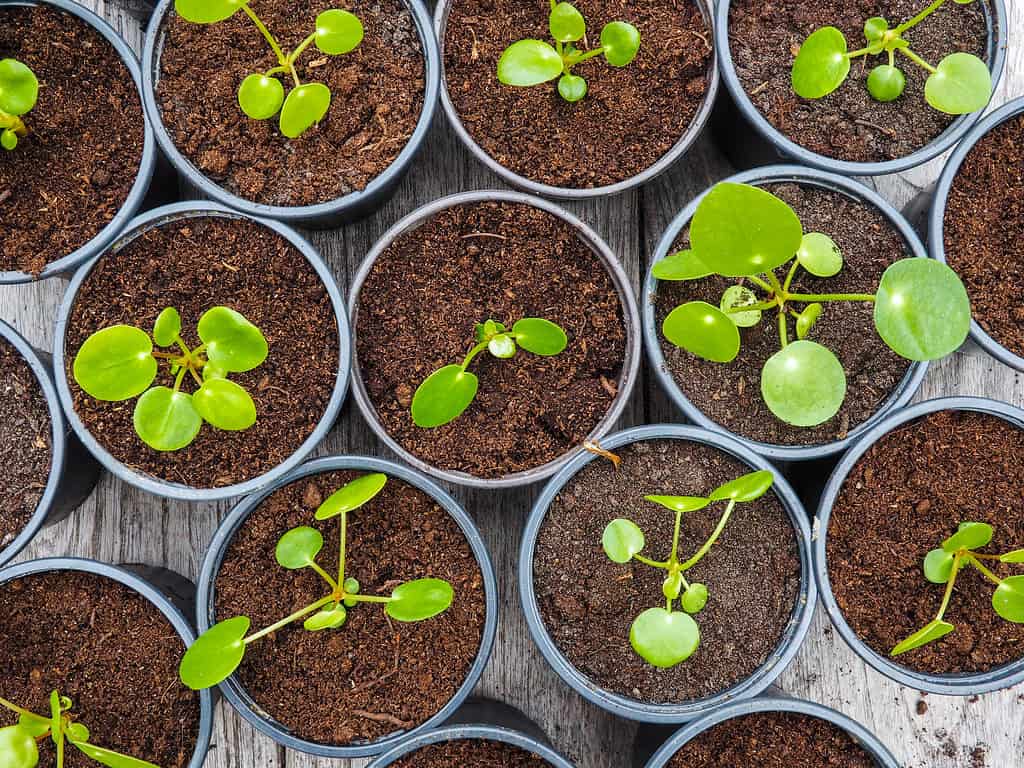
Share the new plants with friends and family, keeping alive the tradition of the pass-along plant.
©Luoxi/Shutterstock.com
Providing a good start with organic potting soil, the right light, and not overwatering, your Chinese money plant will reward you with years of stunning beauty. Interested in learning more about Pilea Peperomiodies? Click here!
Up Next:
- Chinese Money Plant: Light Requirements
- Chinese Money Plant: Watering Schedule
- How to Propagate A Chinese Money Plant
The photo featured at the top of this post is © Pegasene/Shutterstock.com
Sources
- pbs.org, Available here: https://www.pbs.org/newshour/science/neonicotinoid-pesticides-slowly-killing-bees
- apartmenttherapy.com, Available here: https://www.apartmenttherapy.com/chinese-money-plants-are-rare-but-easy-to-grow-244300
- thespruce.com, Available here: https://www.thespruce.com/growing-pilea-peperomioides-5090425
- gardenbetty.com, Available here: https://www.gardenbetty.com/pilea-peperomioides-chinese-money-plant/
Thank you for reading! Have some feedback for us? Contact the AZ Animals editorial team.






